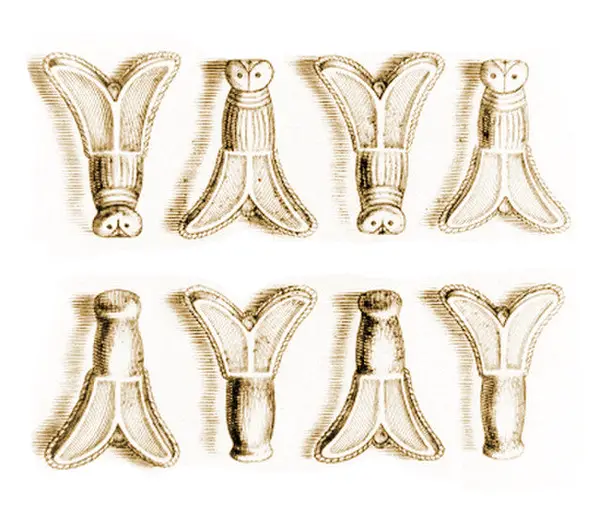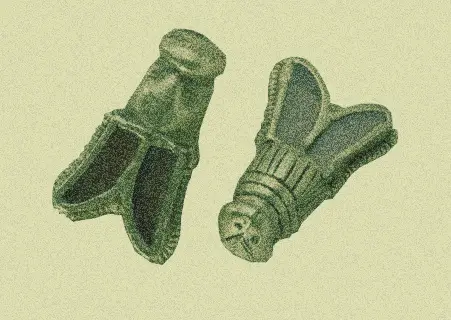Ancient symbols of Frankish royalty
When Napoleon was crowned the Emperor of the French in 1804, he styled himself as a new Roman Emperor. Rather than associate himself with popular French symbols such as the Fleur de Lys, he chose instead to utilize a motif of bee-like insects that was used by ancient Frankish kings of the Merovingian dynasty.

To the ancient Franks, bees were a direct representation of divine feudalism. The insects have a strict societal structure built from the top down. They also produce a sweet, golden liquid that (at the time) could not be found anywhere else in nature. These qualities made them an obvious choice for royal imagery in a time of rapidly expanding Christian influence.
The tomb of Childeric I (son of Merovech, after whom the Merovingian dynasty is named) contained some golden treasures, including a set of golden bees with garnet inlays. These treasures changed hands several times during the late Renaissance, eventually resting at the Bibliotheque Nationale until they were stolen and melted down in the 19th century.

» Amulet
» Ajna
» Arsenic
» Merkaba
» Hung
» Yin Yang
» bindi
» IK Onkar
» Khanda
» Halo
» jiahu
» Tau
» Uraeus
» Menorah
» Quincunx
» Tilaka
» Taijitu
» Vajra
» Chai
» Chi Rho
» Bagua
» Dragon
» Hunab Ku
» Caduceus
» Infinity
» Ichthus
» Hedjet
» Lauburu
» Om
» Ankh
» Chalice
» Pentacle
» Maat
» Ogham
» Mandala
» Kartika
» Khamsa
» Heart
» Labrys
» Sun Face
» Raven
» Triskele
» Scarab
» Dove
» Hanukia
» Anubis
» Trishula
» Durga
» Mezuzah
» Bay Tree
» Geruda
» Kinnara
» Quito
» Condor
» Blue Jay
» Falcon
» Makara
» Rosary
» Uluru
» Apsaras
» Hanuman
» Serpent
» Minotaur
» Mercury
» Apex
» Vestra
» Yoni
» Astarte
» dakini
» Calabash
» Mandrake
» Rebis
» Typhon
» Vegvísir
